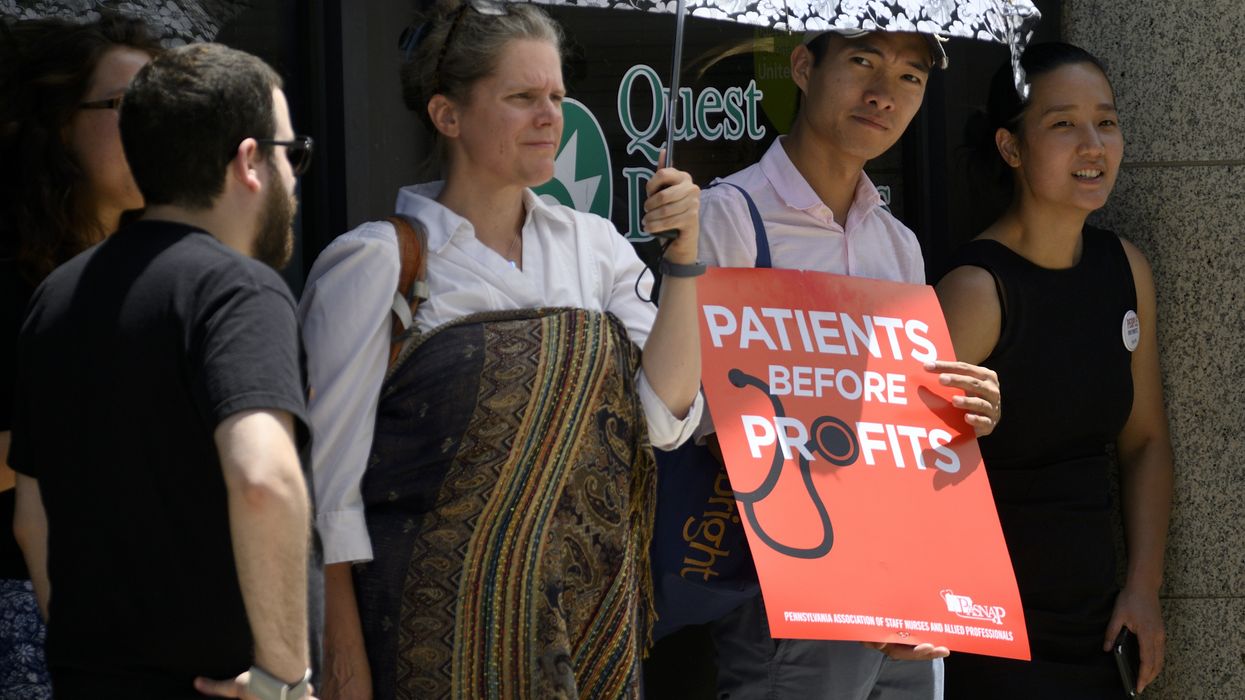Let's Get Real: US Healthcare Is an Industry, Not a System
Insurance and hospital corporations embrace higher profits over patient safety.
This is your nurse. We called him Doug.

Some days we didn’t see a nurse for entire shifts—and only for medication delivery and scanning the bar codes for payment. This is also your patient technician. Oh, wait, techs are in short supply, and the robot camera doesn’t do hands-on patient care. This camera isn't even your fall-risk protection. The camera watches as you fall to record your missteps and guard against liability.
And with the help of every hospital administrator and every one of its complicit employees who have given themselves over to its inhumanity, the medical-financial-industrial complex (MFIC) has evolved to put patients in their places. It is an industry driving nearly one-fifth of the country’s economy—it is not a system.
Patients are widgets, at best, deserving of protection only to the extent that our profitability remains intact. Once the costs of delivering care exceed the revenue generated by our health insurance coverage or bank balances, the MFIC finds ways to turn that equation back to solid gold. The profits are dear. Your health is not the goal. That’s an industry, not a system.
We have an industry that uses patients as widgets and counts profits as the only desired measure of success.
Calling the US healthcare mess a system is the softening of economic terminology that drives the health industry ever forward to higher profit margins. Patients receiving care are medical losses to the insurance side of the house, while those same patients are revenue line items for hospitals and clinics. Our lives are not being protected, and our personal resources are often drained. Industry and greed do that, not health systems designed to heal and serve.
This year is on track to bring record profits to hospitals in Denver like the one in which my husband was trying to heal from complications of hip replacement surgery. Denver area hospitals did great this year and last, even if they try to dance around the facts behind their business successes, and corporate public relations staff work hard to keep the public out of that loop.
Look at the newspaper’s description of the profits. Do you see or hear the measures of how many patients were made healthier by their care? Nope. The measures are almost all business and economics—this is an industry, not a system.
Denver hospitals, in 2024, per the Denver Post:
- AdventHealth: $68.6 million loss, -4.5% margin
- CommonSpirit Health: $222.2 million profit, 9.2% margin (Kaiser patients must now use this hospital too)
- Denver Health: $52.9 million loss, -4.1% margin
- HCA HealthOne: $616.8 million profit, 21.3% margin (my hubby helped boost this number for 2025)
- Intermountain Health: $138.3 million loss, -6.5% margin
- UCHealth: $1.2 billion profit, 17.9% margin (nonprofit, for sure, eh?)
If you choose any city in the country, the consolidation of business interests in healthcare is rapidly making the measure of success one of profits built on the backs of the patients-widgets, their home caregivers who are used in hospital settings as unpaid staff, and taxpayers giving tax breaks to large hospitals corporations to build and expand their services to more paying customers—patients-widgets.
For many years, I have advocated for an expanded and improved Medicare for All coverage plan for all of us. We all pay in already, yet we still pay huge insurance premiums to health insurance companies that simply process paper. Why are we doing that? The coverage we all already pay for in payroll and other taxes is not a welfare plan or socialized medicine. I dare say we’d all be healthier if it were. Medicare as it stands covers our elderly and many disabled people through taxes.
If we improved that and expanded Medicare, private premiums would go away and we could all choose whoever and wherever we wanted to seek care. No government hospitals or doctors to screen care—that’s a lie the profit engine needs to push out. I am 100% in favor of getting the profit motive out of hospital care as much as possible. Greed knows no limits, and greed does not belong as a measure of our health.
This health industry is a largely unregulated mess. You know it, and I know it. It’s time to speak the truth about it—the United States does not have a health system. We have an industry that uses patients as widgets and counts profits as the only desired measure of success. Making money is a fine thing so long as it doesn’t mean lying about how we do it. We fuel our economy on suffering and illness, and without the Patient Protection and Affordable Care Act-ACA-Obamacare subsidies, the health industry will be even more attentive to their bottom line. You ready?


